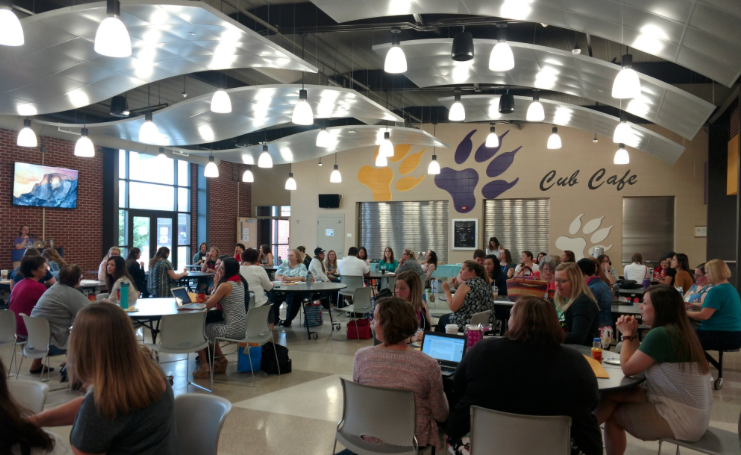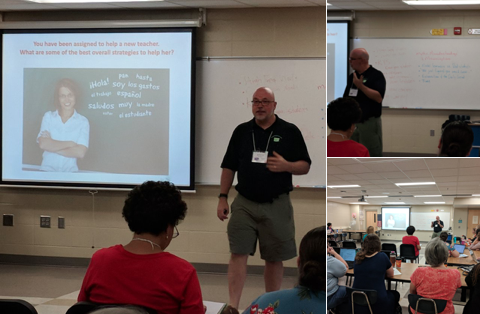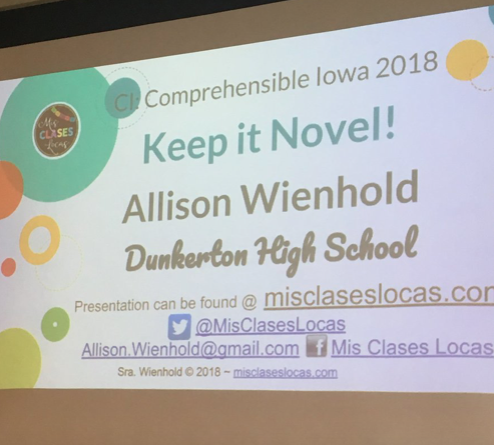(Originally posted 8/5/10)
One of the amazing things that I observed at NTPRS 10 and IFLT 1 was how certain parts of a sentence or a story carry more power than others. Ben Slavic calls it part of the “flow” and when you are watching a lesson, and the teacher taps into it, you can actually SEE the power enter the lesson. It’s incredible.
Let me start with a sentence. As Susie Gross has pointed out to me many times, the brain goes where there is meaning and stays where there is interest.
So…..if you want students to stay focused on what you are saying long enough to get those reps in….there has to be some power added in the sentence. Let’s face it …not every phrase we teach is all that interesting!!!
Where does the power come from? Here are some things that I observed and that presenters and teachers modeled: Power words/phrases:
1. can be clearly gestured.
2. represent or are connected to movement or action.
3. represent or are connected to sound.
4. represent or are connected to emotion.
5. represent or are connected to taste, touch, scent.
6. create an immediate and powerful visual reaction in the listener.
7. tap into memory.
8. tap into a shared experience.
9. tap into humor.
10. are unique.These are all ways to offer the students a way to connect with the language!!!!
Take the target phrase: Jose sleeps. Not all that exciting except that Jose, my Chihuahua is a cute little guy…but…using the ideas above we can more interest…more POWER. If I talk with my students about Jose I can say…
1. Jose sleeps.(and throw a stuffed Chihuahua onto a pillow. I could ask a student to curl up like a dog and snore.)
2. Jose sleeps all day (make ASL sign for day) and Jose sleeps all night (make ASL sign for night)
3. Jose sleeps loudly. (SNORE!)
4. Jose sleeps like a baby. (AWWWW)
5. Jose sleeps on people. (put stuffed animal on students’ shoulders)
6. Jose sleeps on top of the tv. (or in the oven, or in front of the Principal’s office, or on the back of a motorcycle)
7. Jose sleeps with a blanky. (we all have a memory of our blanky or someone else’s…)
8. Jose sleeps during the math class. (oh how language people love math lol)
9. Jose sleeps in footie pajamas. (see how one sentence can tap into several possibilities?)
10. Jose sleeeeeeeeeeeeeeeeeeeeeeeeeeeeeeeeeeeeeeeeeeeeeeeeeeeeeeeeeeps. (if the word itself isn’t unique or fun, use your voice to make it unique!)As I go through these different reps with the students I can pay attention to which sentence elicits a natural, powerful reaction. What kind of reaction? A visual, audible, or physical response to what I’ve said like….
Smiles
Laughter
Denial/Rejection (No!!!! Not footie pajamas!)
Interest (I want Jose to sleep on my shoulder!)
Interaction (super loud snoring)
Verbal Response (I sleep with my blanky!)
When your students “click” with something….jump on that baby and ride it. We practiced recognizing, and responding to, strong student reactions and I saw it transform the teacher, the students and the interactions.
Sometimes it’s hard to know where to go with a sentence or a story. We are afraid of standing up in front of the class rambling on and on about one thing. It feels like pressure to us and that trickles immediately into a message for our students. They read us quickly and soak up every message we give them.
So this year I am going to try to think of the scripting or listing ideas (like I did above) as a way to look for solid ice. When I find a sentence or word that elicits a stronger response…I’ve found the power….and the place to go deeper. A trail to follow. How cool is that?!!
Go with it!!!
With love,
Laurie
All content of this website © Hearts For Teaching 2009-present and/or original authors. Unauthorized use or distribution of materials without express and written consent of the owners/authors is strictly prohibited. Examples and links may be used as long as clear and direct reference to the site and original authors is clearly established.


